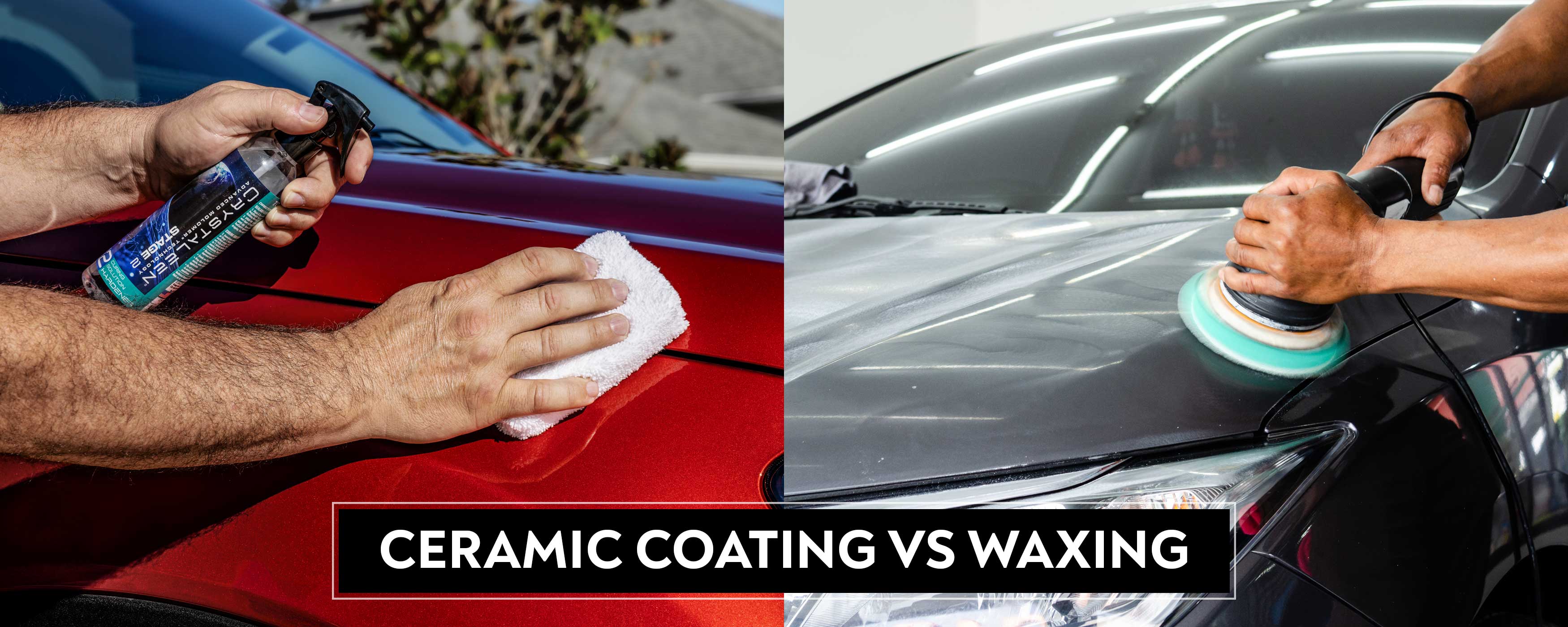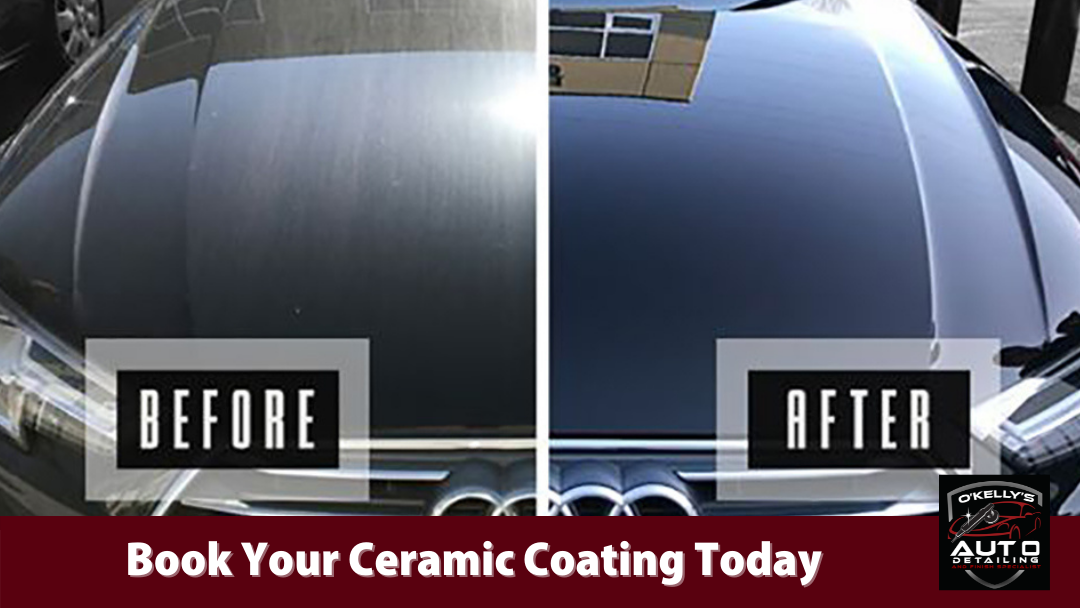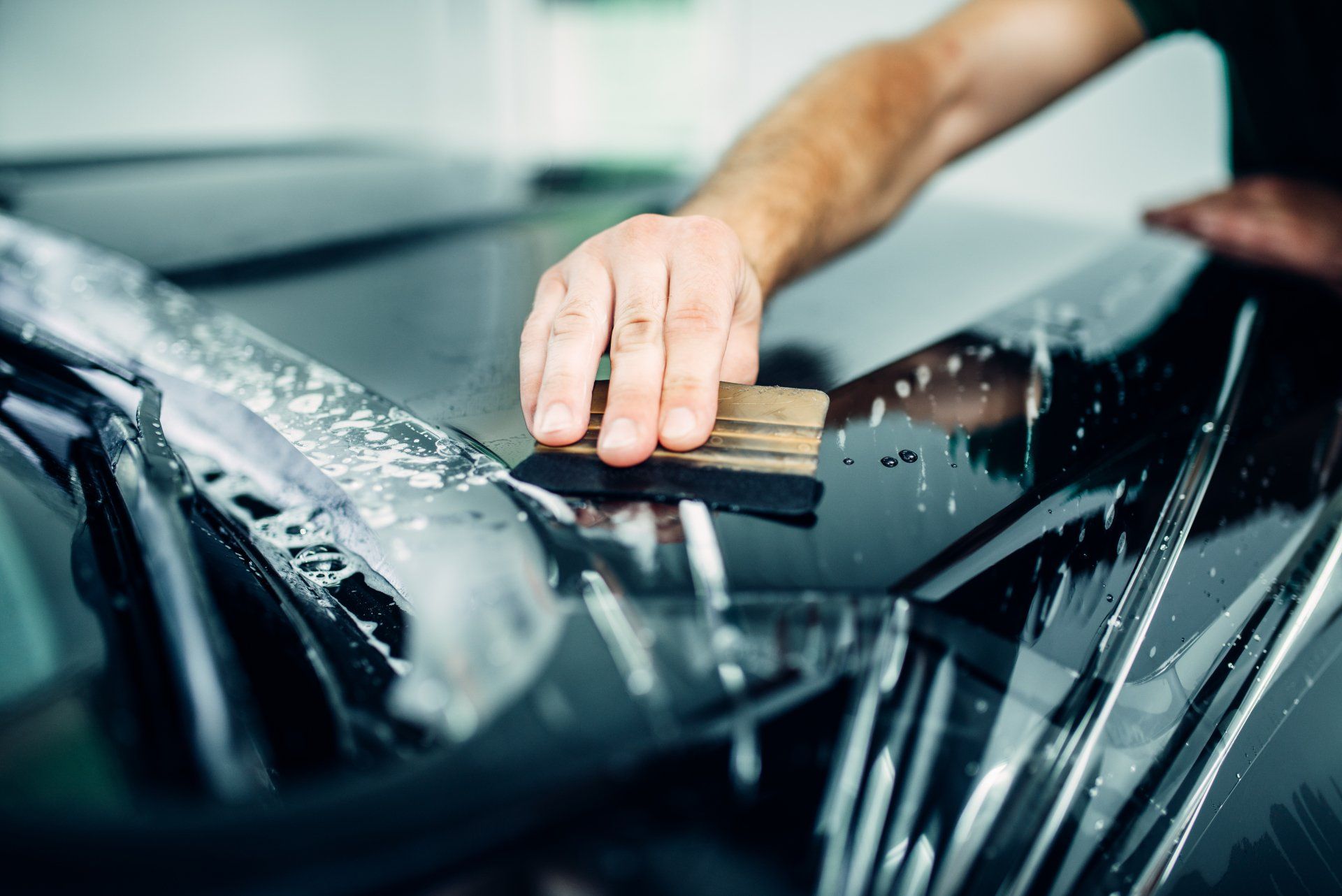Ceramic Coating: The Future of Automotive Surface Protection
Ceramic Coating: The Future of Automotive Surface Protection
Blog Article
Ceramic Finish vs. Standard Wax: Which Offers Better Long-Term Defense?
The discussion in between ceramic layers and standard wax for automobile security has actually amassed significant focus among automobile lovers and experts alike. While both offer the purpose of guarding paint, their distinctions in resilience, application, and long-lasting maintenance costs might influence a consumer's selection. Ceramic finishings flaunt superior durability and resistance to ecological elements, yet the complexity of their application raises questions concerning access and functionality. As we explore these contrasting alternatives, it becomes important to take into consideration not only the instant benefits but additionally the ramifications for automobile care in time.
Review of Ceramic Covering
Ceramic finishing has acquired considerable popularity among automotive enthusiasts and detailers alike due to its advanced protective qualities. This innovative innovation is made to create a durable, hydrophobic guard over a lorry's paint surface area, dramatically improving its resistance to environmental impurities such as dirt, UV rays, and chemical stains. Unlike traditional wax, which offers a momentary layer of protection, ceramic coatings bond at a molecular level with the paint, providing resilient resilience-- usually expanding beyond 2 years with correct maintenance.
The application procedure includes thorough prep work of the automobile's surface, consisting of cleaning and polishing to ensure optimal attachment. When used, the finishing treatments to form a robust layer that not only includes deepness and gloss to the paint yet also streamlines maintenance. With its hydrophobic homes, ceramic coating allows water and dust to slide off more conveniently, lowering the regularity of cleans and minimizing the threat of swirl marks.
Additionally, ceramic layers are offered in different solutions, enabling customers to choose products tailored to their certain requirements and preferences. In general, ceramic finishing stands for a substantial innovation in paint protection technology, supplying remarkable performance contrasted to conventional choices.
Overview of Standard Wax
Traditionally considered a staple in vehicle care, wax acts as a prominent choice for those seeking a straightforward approach to enhance and protect their vehicle's paint - ceramic coating. Automotive wax generally comprises natural components, such as carnauba, or synthetic substances, developed to develop a safety layer externally of the paint. This layer not only enhances the vehicle's gloss and radiate but additionally provides a barrier versus environmental impurities
The application of wax is generally user-friendly, making it obtainable for both experts and do it yourself enthusiasts. It can be applied by hand or equipment, permitting for versatility in the outlining process. When used, wax calls for a treating period, after which it hardens to form a safety shell. Wax is likewise understood for its ability to push back water, promoting a beading result that helps in the prevention of water spots and deterioration.
Nonetheless, while wax works for boosting the aesthetic allure of a lorry, it is essential to note that the security it uses may necessitate a lot more regular reapplication compared to alternate items, such as ceramic coverings. On the whole, standard wax remains a favored choice for those prioritizing convenience of use and immediate aesthetic improvement.
Sturdiness and Durability Comparison
While both ceramic layers and traditional wax deal protective advantages for auto paint, their sturdiness and long a fantastic read life differ considerably. Standard wax, commonly made from natural carnauba or artificial polymers, generally supplies a protective layer that lasts around 3 to six months. This fairly short life expectancy necessitates regular reapplication to keep ideal defense.
On the other hand, ceramic finishings are engineered from sophisticated nanotechnology, creating a covalent bond with the paint surface. This causes a robust, hydrophobic layer that can endure for 2 to five years, depending on the product and ecological conditions. The remarkable resilience of ceramic finishings is credited to their chemical framework, which offers enhanced resistance to scratches, UV rays, and oxidation.

Protection Against Environmental Variables
Shielding an automobile's paint from environmental variables is critical for keeping its appearance and value over time. Autos are continuously exposed to a selection of elements, including UV rays, bird droppings, tree sap, acid rain, and roadway grime, all of which can jeopardize the stability of the paintwork.
Ceramic finishes offer a robust protection against these ecological aggressors. Unlike traditional wax, which can degrade swiftly under UV direct exposure, ceramic finishes create a durable, hydrophobic layer that withstands the hazardous results of sunshine and toxic wastes. This innovative technology produces a chemical bond with the vehicle's surface, offering remarkable defense that lasts for years, also in harsh conditions.
Standard wax, while easier to apply, usually requires regular reapplication and uses restricted resistance to pollutants and UV rays. With time, it can damage down, leaving the paint prone to scrapes and oxidation. In contrast, ceramic finishes keep their protective top qualities much longer, substantially decreasing the threat of paint damage and making sure that the car retains its aesthetic charm. Consequently, ceramic coverings are significantly recognized as the superior selection for long-term defense versus environmental factors.
Application and Maintenance Distinctions
The approaches of application and subsequent upkeep for ceramic finishes and typical wax differ considerably, affecting the general customer experience and effectiveness of each item. Ceramic finishings call for an even more elaborate application process, normally including surface preparation that includes cleaning, visit this website decontaminating, and brightening the vehicle. Once the surface prepares, the ceramic coating is used in a controlled setting, usually requiring specialist experience to make sure proper curing and bonding to the paint.

While both products improve automobile look, the longer-lasting protection used by ceramic finishings may validate their first financial investment, in spite of the even more requiring application procedure. Conversely, standard wax stays a prominent selection for those seeking a less complex, albeit temporary, service.

Final Thought
To conclude, ceramic coverings demonstrate considerable advantages over typical wax in regards to longevity and environmental security. With a lifespan extending two to 5 years and premium resistance to UV rays, dust, and chemical stains, ceramic coatings offer a much more effective service for long-term car upkeep. The application process might need professional know-how, the resulting Full Report cost financial savings and decreased frequency of reapplication highlight the value of ceramic finishings for those seeking optimal vehicle protection.
The dispute in between ceramic finishes and conventional wax for automobile security has actually amassed considerable focus among automotive lovers and professionals alike. Unlike standard wax, which offers a momentary layer of security, ceramic finishings bond at a molecular degree with the paint, supplying lasting resilience-- commonly expanding past 2 years with correct maintenance.
While both ceramic coatings and conventional wax offer protective advantages for vehicle paint, their resilience and longevity differ considerably. For vehicle fanatics looking for long-lasting security, ceramic coverings present a compelling benefit over conventional wax products.
In conclusion, ceramic finishes demonstrate considerable advantages over traditional wax in terms of sturdiness and ecological protection.
Report this page